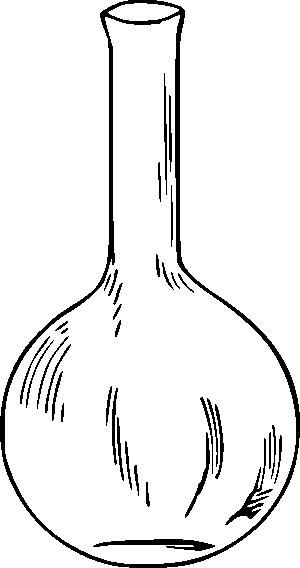In today's global science community, Laboratory Reports and Scientific Data are vital for effective communication and collaboration. These reports serve as comprehensive guides, enabling researchers worldwide to navigate experiments, replicate findings, and contribute to scientific progress. Key components include executive summaries, detailed methodologies, organized data visualizations, strategic formatting, and strict adherence to data integrity standards. By prioritizing clarity, transparency, and accuracy, these reports enhance research credibility, facilitate peer review, and drive advancements in the field.
In the fast-paced world of scientific research, clear communication is key. Laboratory reports and scientific data play a pivotal role in sharing findings, fostering collaboration, and driving innovation. Understanding the importance of concise, accurate documentation can significantly boost your chances of success. This article delves into essential components, best practices, and strategies for presenting laboratory results effectively, ensuring your work resonates clearly with peers and contributes to impactful research outcomes.
- Understanding the Importance of Clear Laboratory Reports
- Components of an Effective Scientific Data Report
- Strategies for Presenting Complex Data Concisely
- Best Practices for Ensuring Data Integrity and Accuracy
- The Impact of Well-Documented Laboratory Reports on Research Outcomes
Understanding the Importance of Clear Laboratory Reports
In today’s scientific landscape, where research is fast-paced and collaborations are global, clear laboratory reports and effective communication of scientific data are paramount. These records serve as a roadmap for both current and future researchers, ensuring that experiments can be replicated, verified, and built upon. A well-structured laboratory report not only documents methods, results, and analyses but also facilitates collaboration by enabling peers to understand, question, and contribute to the research process.
Moreover, clear communication of scientific data allows for better interpretation and validation of findings. It enables researchers to identify patterns, trends, and anomalies, leading to more accurate conclusions and informed decisions. In a field where precision and clarity are essential, investing time in preparing concise, detailed laboratory reports pays dividends by enhancing the credibility and impact of scientific research.
Components of an Effective Scientific Data Report
A robust scientific data report is a critical component in any research or experimental process, serving as a detailed account that communicates findings clearly and accurately. Key components include a succinct executive summary, which provides an overview of the methods used, results obtained, and primary conclusions drawn from the data. This section sets the stage for the subsequent in-depth analysis, making it essential for readers to grasp the essence of the study at a glance.
The heart of the report lies in the methodology, where researchers elucidate the procedures, techniques, and instruments employed in their experiments. This transparency is vital for laboratory reports and scientific data as it allows peers to understand the study’s validity and reproducibility. Furthermore, presenting clear and organized data tables, charts, and graphs alongside descriptive captions enhances comprehension of the results, enabling readers to interpret the visual representations accurately.
Strategies for Presenting Complex Data Concisely
Presenting complex data from laboratory reports and scientific studies in a concise and understandable manner is an art. One effective strategy is to break down the information into digestible chunks, using headings and subheadings to guide readers through the key findings. Visual aids like graphs, charts, and diagrams can simplify intricate concepts, ensuring that even non-experts can grasp the significance of your data. Additionally, provide clear and concise explanations for each visual element, allowing readers to interpret the data accurately.
Another crucial approach is to prioritize information. Focus on the most critical findings and trends, highlighting them in bold or using other formatting techniques. Summarize lengthy datasets by extracting essential statistics and insights, ensuring that your laboratory reports and scientific data remain focused and easy to follow. This strategic presentation not only enhances readability but also effectively communicates complex research outcomes.
Best Practices for Ensuring Data Integrity and Accuracy
Maintaining data integrity and accuracy is paramount in scientific research, as it ensures the validity and reliability of laboratory reports and scientific data. To ensure consistency and minimize errors, researchers should adhere to best practices such as implementing standardized protocols for data collection and recording, using calibrated instruments, and maintaining detailed records of all methods and materials used.
Additionally, regular quality control checks and independent verification of key findings can help catch any discrepancies or anomalies early on. Documenting every step of the experimental process meticulously, including any deviations or adjustments made, promotes transparency and allows for replication by peers, strengthening the overall integrity of the scientific record.
The Impact of Well-Documented Laboratory Reports on Research Outcomes
Well-documented laboratory reports and meticulously organized scientific data are integral components of any successful research endeavor. They serve as a clear and concise record of experimental methods, observations, and results, enabling researchers to retrace their steps and verify the accuracy of their findings. This level of detail is paramount in ensuring the reproducibility of experiments, a cornerstone principle in scientific methodology.
When laboratory reports are comprehensive and easily accessible, they facilitate collaboration among scientists. Peer review, a critical process in academic research, relies on clear documentation to assess the validity and significance of presented data. Moreover, these reports contribute to the broader scientific knowledge base, as they become valuable resources for future studies, building upon past research and accelerating scientific progress.
Clear laboratory reports and meticulously organized scientific data are indispensable tools for any researcher. By mastering the art of presenting complex information concisely, scientists can significantly enhance their research outcomes. Implementing best practices for data integrity ensures accuracy, fostering trust in the findings. In today’s competitive research landscape, well-documented laboratory reports stand as a testament to rigorous methodology and open a gateway to new discoveries.
